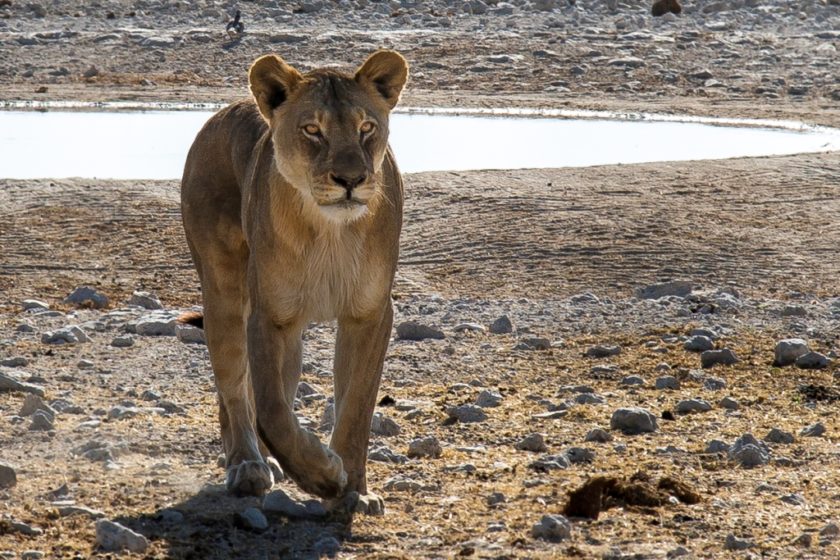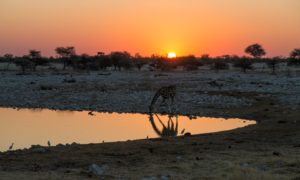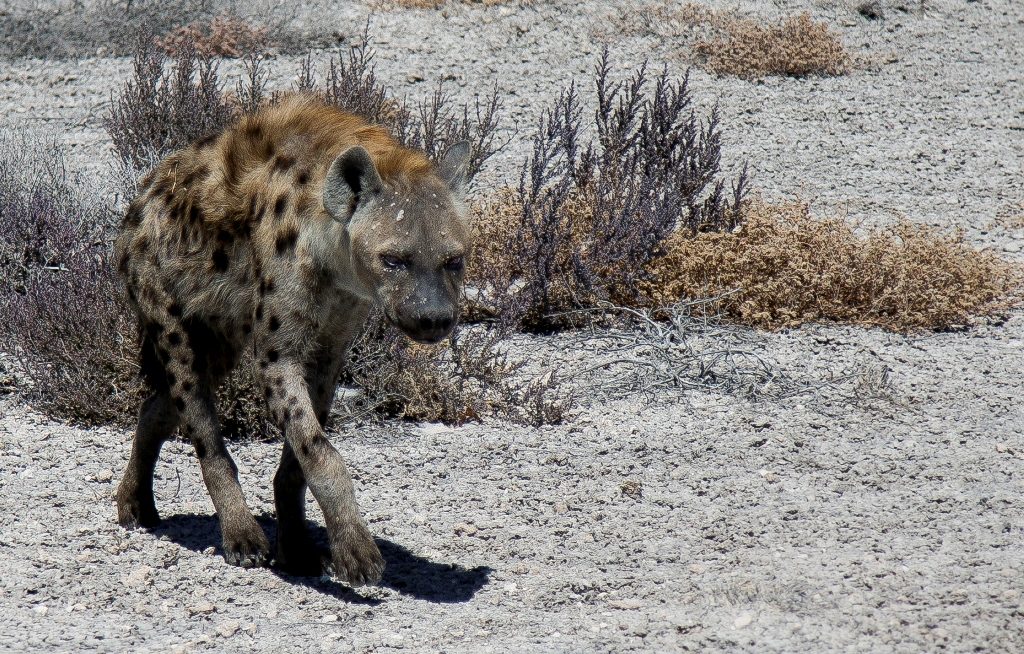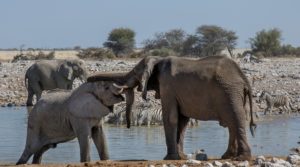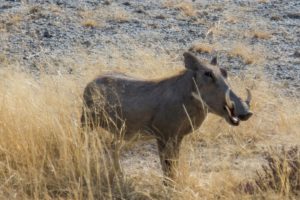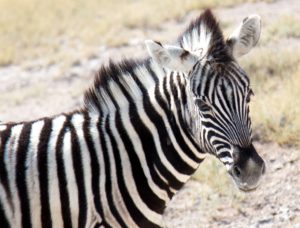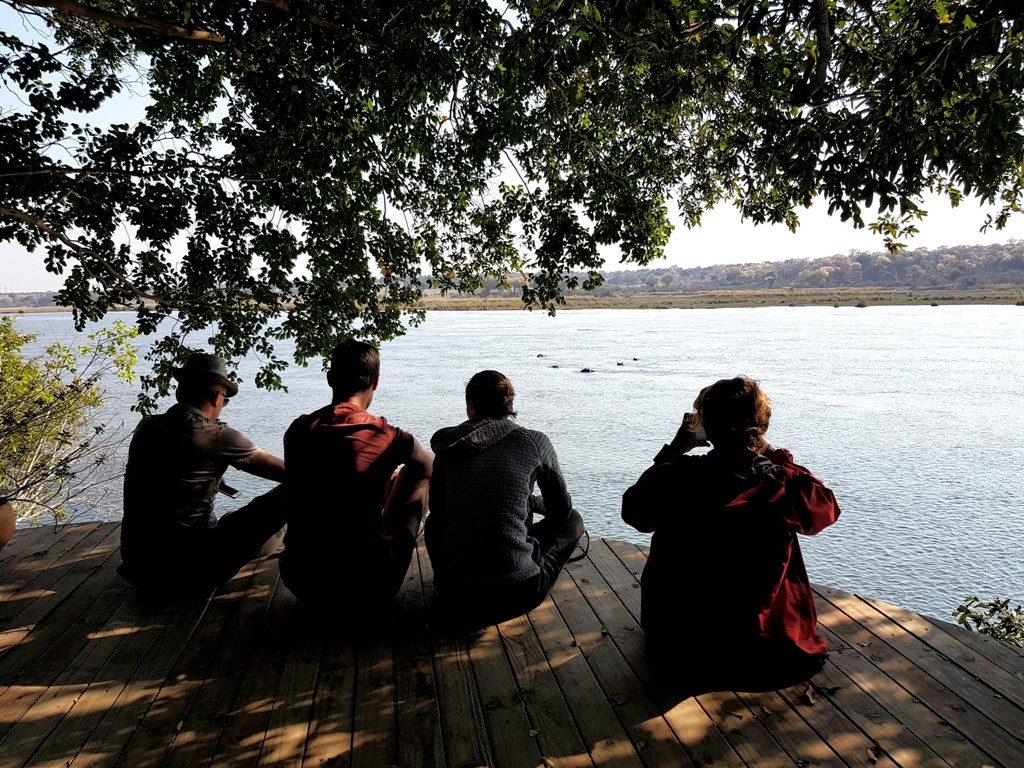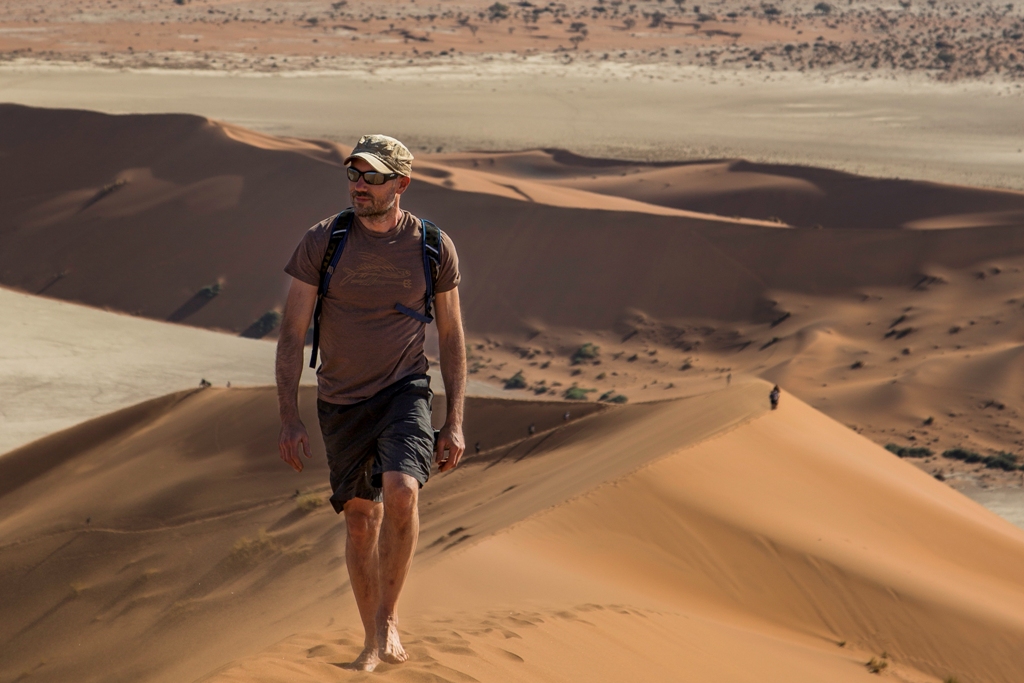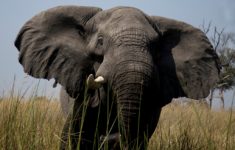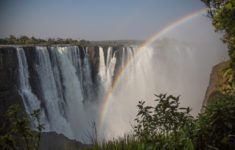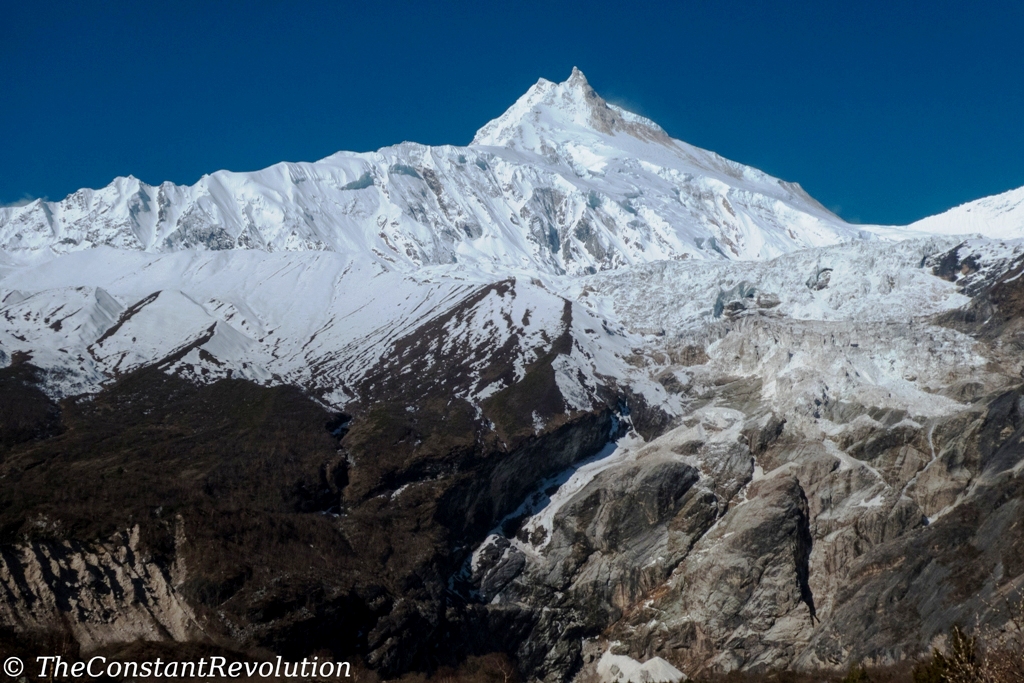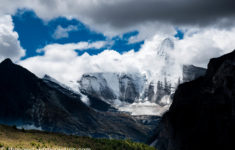Namibia’s wildlife makes your jaw drop, especially in Etosha National Park. Here’s an itinerary, lots of photos and tips to enjoy your game drives.
This article is part of a series of four, to describe a single travel itinerary that included Namibia, Botswana and Zimbabwe. The whole itinerary lasted three weeks, during which we (myself and four more friends) drove for about 5000 Km (including the safaris), and can be found on this online map.
In the descriptions, I’ll add useful information for the specific places. At the bottom of each article I’ll explain the organisation of the whole trip: when to go, renting the car, roads conditions, camping, safety, costs… One important thing right away though: book six months in advance at least, or you risk not finding any accommodation in the best spots, especially inside the national parks, or a good car.
Continues from Deserts of Namibia
PALMWAG
From Abu Huab, and the splendid Twyfelfontein rock engravings, we started to move towards a different phase of the whole trip. From here on, we would spend most of our time on game drives, and in general wildlife watching. The first place we visited was Palmwag. There is a private lodge and campsite here, connected to a private reserve.
The place is really peaceful and beautifully kept. The game drive was fun, although really hard, on a proper off road, bumpy road for the whole day. There aren’t so many animals in the reserve, but it’s worth a visit if only for the intensely red coloured hills, sparsely populated with bushes; for the small canyons in another corner of the reserve; or for that feeling of remote wilderness you get by driving around here.
For the whole day, we crossed perhaps just one other vehicle, and from afar. We saw our first giraffes, and our first (of many to come) elephant. We also saw footprints of hyenas and lions. It was a nice day, while at the lodge we took another easy half a day to rest and re-organise ourselves before Etosha.
UNMISSABLE: ETOSHA NATIONAL PARK
This is the second highlights of the whole itinerary. It kind of goes without saying perhaps, but despite reading blogs, and seeing photos, and kind of knowing what to expect, I was still speechless at the spectacles offered by Etosha National Park. This place is an unmissable destination for any Namibian travel itinerary.
Practical info
The best time to go is July and August, during the dry season, when animals gather around water holes. There are several resorts inside the park, all protected by walls. It’s compulsory to sleep inside the resorts, but they need to be booked well in advanced, more than 6 months, or you might not find any availability, neither for the campsites nor for the rooms. It’s possible to enter the park daily as well, but it really isn’t the same thing, also because most of the wildlife movement happens early in the morning and around sunset, or during the night, and if you are sleeping outside the park, you wouldn’t be much around at those times.
An entry fee per person and per vehicle needs to be paid depending on the number of days that are going to be spent in the park. Even here, campsites are relatively cheap, around $15 per person, especially if compared to rooms, which could cost hundreds of dollars per night! The positioning doesn’t change much, rooms are more private, but they are no more than 50 m from the campsite, and with no less passage of people.
However, camping here is not like on the rest of the trip: space is limited, there’s very little shadow, lots of people around in comparison, and it’s quite dusty. These small discomforts are more than compensated by the fact that it is easier to socialize, by the beauty of the place overall, and by the mere fact that there are restaurants, and they are not expensive, which makes things easier for few days.
Night independent game drives are prohibited, but resorts organise night safaris for modest prices, to go and see the more nocturnal creatures, such as the black rhino, the leopard, and hyenas. Now, for obvious reasons I can’t describe everything we saw in terms of wildlife, therefore I’ll just point out the best of, and publish a bunch of photos 🙂 Oh, pay attention to the jackals in the campsites, they looove stealing shoes!
Okaukuejo resort
We spent two nights here, and it is in my opinion the best spot in the whole Etosha. Not only it is centrally located, allowing to go for game drives pretty much everywhere in the park, but it also has an incredibly well-frequented water whole, really close to its walls, which is possible to observe day and night by sitting comfortably.
The presence of this waterhole creates a kind of suspended atmosphere: visitors pass most of their time staring at it, in a religious silence, waiting, listening, with their cameras ready to capture anything that shows up. I could feel respect, concentration, and love for wildlife. It’s really cool!
The wait is very often rewarded. One day we came back from a game drive late morning, we had lunch, and early in the afternoon a group of more than 30 elephants of all sizes and measures, came to play at Okaukuejo waterhole. They remained there for about two hours, bathing and learning how to fight, what a show! Another time a giraffe was there, right at sunset, drinking water.
The waterhole is permanently lightened up during the dark hours, and three black rhinos came to drink around midnight of the same day. In the now cold silence, only a few people still awake, their slow, steady steps, crushing heavily on the rocks below, could be heard from afar, much before they even came into sight. So, that’s the sound of a rhino approaching.
Wildlife
What happens, which I believe is quite unique in the world, sometimes around the waterhole there’s a lot of animals, hanging out altogether. At our very first visit, we ended up in a spot with lots of zebras, antelopes, wildebeests, ostriches, three giraffes, and, unusual during the day, a black rhino passed by to drink and rest. We were speechless!
We saw lions on two occasions, once from afar, they were sleeping under a tree and behind a few bushes, there were also a couple of cubs. The following morning though, we were really lucky: a male and two females were going at a waterhole to drink and rest, carefully observed by all other animals around, who wouldn’t dare to approach the water as long as the lions were there.
There were a lot of tourists, but we followed them and parked as close as allowed to the waterhole. When they turned to walk back, in a straight line, they passed right in front of our car, females first, really few metres from us. I was really excited, being the first time I saw lions that close!
Our luck continues when going back to the campsite, as we spotted an unusual diurnal hyena in the distance. We stopped, and unconcerned about our presence the animal just walked towards us and came very close.
All in all, we saw almost everything in our three days in Etosha, but for white rhinos and the very much searched for Leopards and Cheetah. To tell the truth, we might have spotted a Leopard, in the middle of the day resting under a far away bush. But I am not counting it, it was really far, we didn’t get a good look at it.
The third night was spent at Namutomi camp, also nice but not as lively. The road to get there goes East, as we would get out from the park on that side to continue toward Caprivi Strip. The drive was beautiful though, and we saw many different types of antelopes, giraffes, and a new entry, the amusing looking warthog.
TOWARDS NGEPI CAMP
Our three days in Etosha flew away in an instant, it’s a place where I would have loved to spend more time, and go visit every single corner of the park. Most of the time we were in our car, for game drives, and now two more long drives were before us, to take us close to Botswana border, and then to Maun.
So we set off direction Caprivi Strip. Unfortunately, we did not have the time to linger, and we just passed through. I read of many magnificent sites for wildlife watching in the strip though, I am sure it would be worth to visit. All I can say is that the landscape became much greener compared to the arid Etosha and the rest of our Namibia itinerary. The area is also more populated, there are many chances to see villages along the road, and stop for provisions.
Our destination was Ngepi Camp, in the Babwata National Park, and very close to Botswana’s border. The camp is a bit hard to reach, the last few Km need a four wheeler to be tackled, but it’s also a fantastic place. The campsite areas are wide spaces on the grass along the Cubango river, where many Hippos live. So, we had dinner with hippos sounds and breakfast with hippos views. It couldn’t be any better.
The camp has also a lovely bar, with a terrace on the river and all, and it’s one of the most welcoming and friendly places we have been to. Highly recommended! After thoroughly enjoying this spot, the following morning we entered Botswana.
To continue reading about the itinerary see Botswana, Kingdom of Elephants
TRIP ORGANISATION
Some information about the organisation of the whole itinerary.
When to go
No doubts here, the best season for game drives is during the southern hemisphere winter. At this time, the climate is dry, always sunny and quite hot during the day (25 C to 30 C) and coldish during the nights, it could go down to around 5 C. But it depends on the area. Along the coast is colder and more humid, the more you move inland, towards Botswana and then Zimbabwe, the warmer the temperature, also overnight. During the dry season, animals gather around water holes, and it is much easier to see them, especially in Etosha. However, during the day they are more lethargic, for it is too hot.
Camping
It’s possible of course to book resorts, lodges etc. However, besides increasing the costs ten times or more for accommodation, camping in Namibia and Botswana is part of the experience.
I have never seen such beautiful and wild camping area, at the same time very well equipped with warm showers and clean toilets. The best thing of all is the feeling of isolation. In most cases, there’s a lot of space between the designated camping areas, and even when there are other tourists around, it never feels cramped, quite the contrary. Furthermore, excepted inside Etosha, camping area are just open and wild, you can hear the sounds of wildlife during the night, and in a couple of occasions we saw hyena footprints close to our tends.
If that’s scary, you can hire a car with rooftop tends, which are also much easier and quicker to set up. We were in five and we had two rooftop tents for four of us, while I slept in a ground tent all the time. It gets dark pretty soon in the winter season, around 6 PM, so cooking, having a drink, and chatting around a bonfire during the dark hours is another plus for camping, really cool. Finally, the costs, $10 to $15 per person anywhere, while sleeping in lodges and resorts is incredibly more expensive, sometimes several hundreds of dollars per night.
Food, water, fuel
In most cases when camping you’ll have to cook for yourself. Water and food can be bought regularly in small towns here and there. But better to know in advance how many days of provisions you’ll need, and make sure there will be more shops afterwards. In the most touristic areas, like Etosha National Park, there are restaurants too. Camping management can provide wood for the bonfire for a couple of dollars, and in case of need often they sell food too, but it would be more expensive. As for fuel, there aren’t so many stations around, but the tanks of these cars are very big, and often modified to have even more capacity. We could drive for 1,200 Km with a full tank. In this conditions, refilling has not been a problem at all.
Car rental
We did a lot of research before deciding on a car rental company. There’s several in Windhoek, and things to consider beforehand are: the company reputation (check online!), prices, condition of the cars (check everything on site!), unlimited mileage, insurance coverage, number of drivers, tank capacity, equipment included or excluded in the basic price such as spare wheels, rooftop tents, fridge if you are self-cooking, cooking tools, emergency tools etc… it takes a while to check all of this and compare prices. I will not advertise here, but at the end we paid €2,500 in total for 20 days rental, including a pickup fee of €500 as we returned the car in Maun, Botswana. Our itinerary was a one way only.
Roads conditions
All the roads are dirt roads, sometimes really bumpy, sometimes proper off-road driving with huge holes and steep ups and downs (especially in Botswana), sometimes extremely sandy. Driving slow and attentively is imperative, also for the possible passage of wildlife, and particularly at night. Actually, it is much better not to drive at night at all, and it is not permitted inside the parks. We did see people who had accidents, exclusively because they were going too fast and they lost control of the vehicle. Also because you don’t come across other vehicles so often. They destroyed their cars and ruin their fun.
Experience with four-wheel, off-road and deep sand driving is quite important as well, particularly in Botswana, even more particularly if you want to cross Savuti Chobe National Park. Lots of sand there, and a very warm and deserted place, getting stuck would be quite dangerous. If you don’t feel confident, then better to go around the south-east and take the normal road to Maun. Unless you are planning to sleep inside the park of course, in which case no choice. We only crossed it in one day.
Safety
I must say that absolutely nothing weird has happened to us, besides the occasional local person who tries to insistently sell you stuff. On the contrary, the locals we got to talk to were very nice and welcoming. However, the car company specifically told us to avoid stopping alongside the road when local people ask for help, as many robberies, sometimes violent ones, have been happening by using this trick. We didn’t come across any such situation. In general, we frequented camping areas and touristic places, feeling very safe. Some attention, as everywhere in the world needs to be paid in cities, such as Windhoek or Swakopmund.
Costs
I believe we managed to keep the costs as low as it gets, considering the number of wonderful places we visited and the experiences we had. The total cost per person for the whole three weeks trip amounted to about €3,000. This included: return flight from Europe to Johannesburg, one way flight from Johannesburg to Windhoek, one way flight from Victoria Falls to Johannesburg, as it was a one way itinerary; renting of the car (5 people for a car that carries 5 people), and fuel; all accommodations (mostly camping), and all daily expenses such as food, water, snacks, including few restaurants; all national parks entry fees; and all extra activities and tours. Tours included: sand boarding or quad driving in Swakopmund, a marvellous two-days boat safari in the Okavango Delta (about €200 per person), a boat tour and a kayak tour in Chobe River NP, and an amazing rafting on the Zambesi river in Zimbabwe. Not bad huh?

Viva the transparency! There are affiliate links in this article. This means if you click on a link and end up buying (or booking) through those websites, I’ll get a small commission, at no extra cost to you. This helps me maintain the blog, and continue to provide (hopefully) useful travel information. I advertise only products I have tested and sites I use myself!
